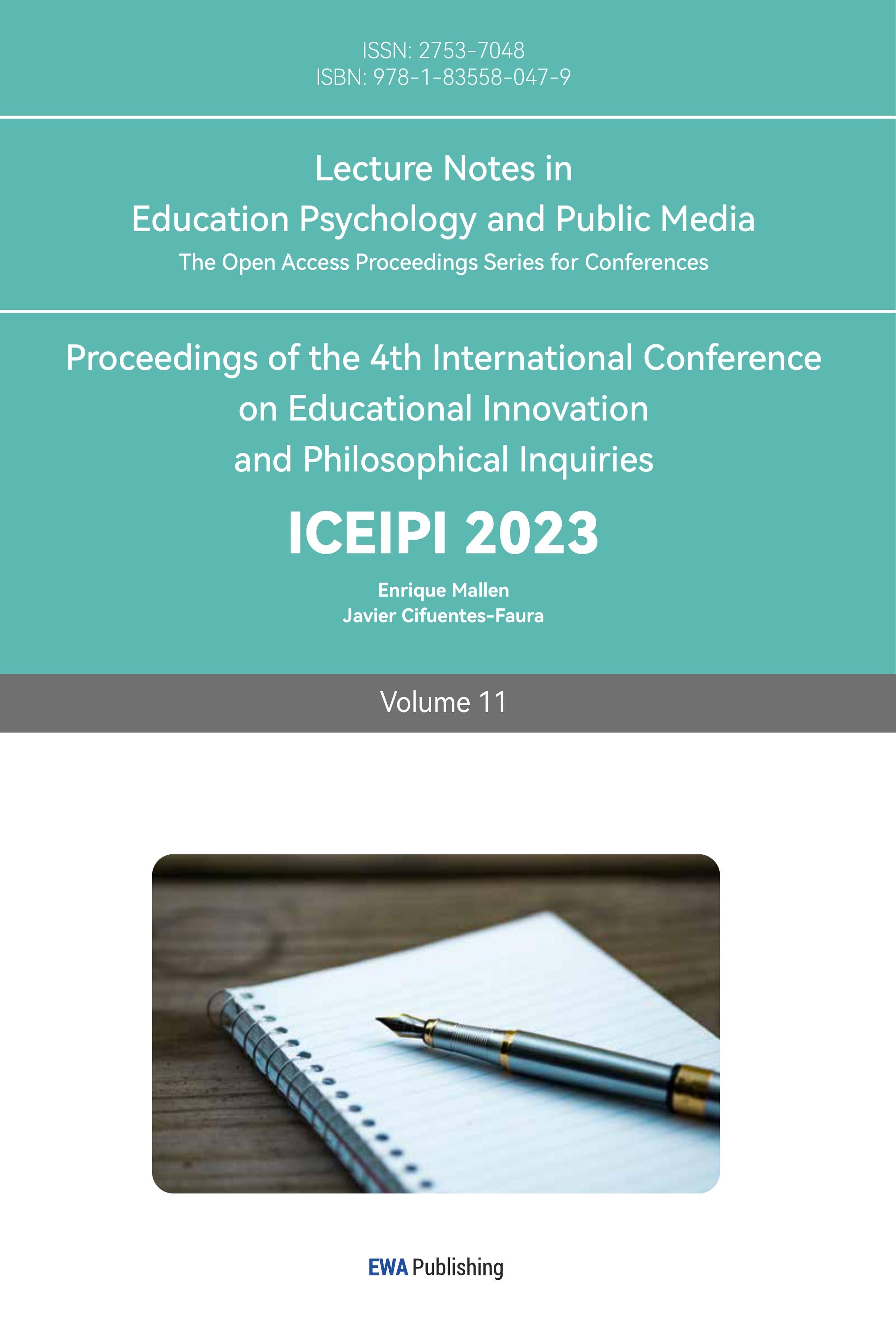References
[1]. P. Cortez and A. Silva. April, 2008.Using Data Mining to Predict Secondary School Student Performance. In A. Brito and J. Teixeira Eds., Proceedings of 5th FUture BUsiness TEChnology Conference (FUBUTEC 2008) pp. 5-12. https://www.kaggle.com/datasets/janiobachmann/math-students
[2]. IT23131, October, 2021, The watermelon of the decision tree, https://blog.csdn.net/IT23131/article/details/121068259
[3]. Love_YourSelf, Novermber, 2022, Classification based on decision tree, https://blog.csdn.net/qq_48068259/article/details/127640315
[4]. Nine door data analysis research center, in June, 2021, the advantage of decision tree, http://www.jiudaomen.com.cn/question/newsdetail_68974687.html
[5]. Hu Mingming.,2008, Research on the Application of Decision Tree Algorithm in the Analysis of Students’ course scores,22-27. Master’s Thesis, Harbin Normal University.
[6]. Hu Mingming.,2008, Research on the Application of Decision Tree Algorithm in the Analysis of Students’ course scores,17-18. Master’s Thesis, Harbin Normal University.
[7]. Yogesh Sachdeva, Ayushi Arora and Kriti Suri,January,2022,Data Exploration & Visualization Project on Student-Mat dataset using Python. https://www.kaggle.com/code/yogeshsachdeva223/student-mat-exploration-and-visualisation/notebook
Cite this article
Wang,Y. (2023). Analysis of the Influence of Some External Factors on Students’ Mathematics Achievement Based on Decision Tree Algorithm. Lecture Notes in Education Psychology and Public Media,11,250-258.
Data availability
The datasets used and/or analyzed during the current study will be available from the authors upon reasonable request.
Disclaimer/Publisher's Note
The statements, opinions and data contained in all publications are solely those of the individual author(s) and contributor(s) and not of EWA Publishing and/or the editor(s). EWA Publishing and/or the editor(s) disclaim responsibility for any injury to people or property resulting from any ideas, methods, instructions or products referred to in the content.
About volume
Volume title: Proceedings of the 4th International Conference on Educational Innovation and Philosophical Inquiries
© 2024 by the author(s). Licensee EWA Publishing, Oxford, UK. This article is an open access article distributed under the terms and
conditions of the Creative Commons Attribution (CC BY) license. Authors who
publish this series agree to the following terms:
1. Authors retain copyright and grant the series right of first publication with the work simultaneously licensed under a Creative Commons
Attribution License that allows others to share the work with an acknowledgment of the work's authorship and initial publication in this
series.
2. Authors are able to enter into separate, additional contractual arrangements for the non-exclusive distribution of the series's published
version of the work (e.g., post it to an institutional repository or publish it in a book), with an acknowledgment of its initial
publication in this series.
3. Authors are permitted and encouraged to post their work online (e.g., in institutional repositories or on their website) prior to and
during the submission process, as it can lead to productive exchanges, as well as earlier and greater citation of published work (See
Open access policy for details).
References
[1]. P. Cortez and A. Silva. April, 2008.Using Data Mining to Predict Secondary School Student Performance. In A. Brito and J. Teixeira Eds., Proceedings of 5th FUture BUsiness TEChnology Conference (FUBUTEC 2008) pp. 5-12. https://www.kaggle.com/datasets/janiobachmann/math-students
[2]. IT23131, October, 2021, The watermelon of the decision tree, https://blog.csdn.net/IT23131/article/details/121068259
[3]. Love_YourSelf, Novermber, 2022, Classification based on decision tree, https://blog.csdn.net/qq_48068259/article/details/127640315
[4]. Nine door data analysis research center, in June, 2021, the advantage of decision tree, http://www.jiudaomen.com.cn/question/newsdetail_68974687.html
[5]. Hu Mingming.,2008, Research on the Application of Decision Tree Algorithm in the Analysis of Students’ course scores,22-27. Master’s Thesis, Harbin Normal University.
[6]. Hu Mingming.,2008, Research on the Application of Decision Tree Algorithm in the Analysis of Students’ course scores,17-18. Master’s Thesis, Harbin Normal University.
[7]. Yogesh Sachdeva, Ayushi Arora and Kriti Suri,January,2022,Data Exploration & Visualization Project on Student-Mat dataset using Python. https://www.kaggle.com/code/yogeshsachdeva223/student-mat-exploration-and-visualisation/notebook









